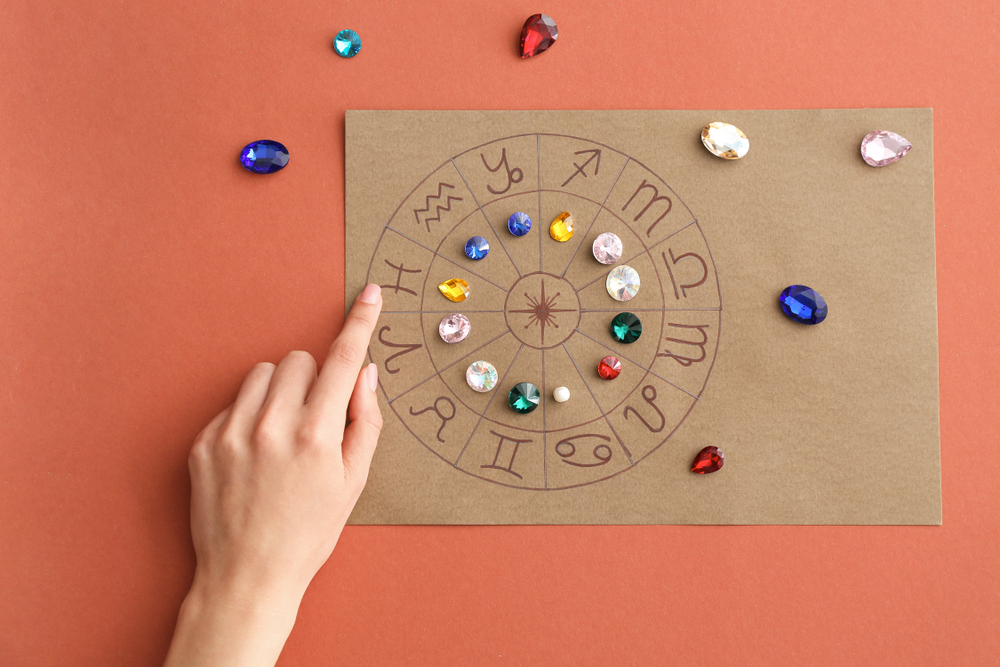
Do you know your birthstone? Perhaps you own some birthstone jewelry or you’ve looked up your stone out of curiosity. Maybe you’ve wondered why and how these gemstones were assigned to each month. Like many modern traditions, the story behind birthstones is fascinating and complex. Discovering their origins requires a trip through history and examining some interesting religious traditions.
Inspired by Jewish Priestly Garments
The Encyclopedia Britannica explains that our modern birthstones are roughly based on the stones in a Jewish high priest’s breastplate. As described in the Torah, the stones on a hoshen were arranged in four rows of three. Their English names come from Exodus 28:17-20 in the Jewish Publication Society’s translation of the Tanakh:
- Row 1: Carnelian, chrysolite, and emerald
- Row 2: Turquoise, sapphire, and amethyst
- Row 3: Jacinth, agate, and crystal
- Row 4: Beryl, lapis lazuli, and jasper
The priestly hoshen also bore the names of Israel’s twelve tribes, so each gemstone corresponded with a specific tribe. Rabbi Yehuda Altein mentions that disputes exist over some gems’ identities, and that’s partially due to translation differences. Some classical Hebrew gemstone names have several possible translations. “Leshem,” for instance, could refer to opal, jacinth, or amber. What the Torah calls “sapphire” in this passage may actually be lapis lazuli.
Birthstones in Modern Times
The Encyclopedia Britannica article lists both ancient birthstones and their 21st-century equivalents. While some months kept their traditional gemstones in modern times, others have changed or added stones. The National Association of Jewelers created the first standardized modern birthstone list in 1912, including commonly available alternatives for rarer stones to offer more options for jewelry buyers.
Birthstone lists have been updated several times in the last 100 years. Most primarily include transparent gems that can be cut into facets, such as peridot and tourmaline. Some traditional birthstones are opaque semiprecious minerals like turquoise, so they’re usually cut and polished into smooth round stones called cabochons. The United States lists were updated in 1952, 2002, and 2016. The United Kingdom’s National Association of Jewelers publishes its own list, which is current as of 2013.
Birthstones, Folklore, and Astrology
Cultural myths from around the world attempt to explain gemstones’ origins and credit them with metaphysical properties. Vogue’s Alexandra Malmed discusses folklore involving several common birthstones. Rubies were thought to hold the power of life and ensure good health for their wearers. Another legend claims that bloodstone received its characteristic deep red spots from Jesus’s blood falling upon it during his crucifixion. Associated with many different months and zodiac signs, amber was said to be the solidified golden tears cried by the Norse goddess Freyja. Ancient Greeks believed that garnets represented the pomegranate seeds that Hades gave to Persephone before she left the Underworld.
Birthstones are normally associated with months, but both Café Astrology and The Spruce’s Lauren Thomann discuss how they can match up to astrological signs. No universal schema exists that assigns gems to astrological signs, but most systems closely resemble birthstone and month pairings. If you’re a Leo, for instance, your stone might be onyx, ruby, amber, or citrine, and some lists include peridot.
Beauty Beyond Physical Attributes
Human beings have searched for meaning for millennia. We look for patterns, logic, and hidden messages in nearly everything: the weather, flora and fauna, geological formations, and others’ behavior. We admire the rich array of minerals in our planet’s crust that we collect and polish into gemstones, but is there any significance beyond their stunning beauty? Many cultures believed that these stones held special symbolism or contained amazing properties bestowed by the divine beings who created them. Modern science looks askance at such claims, but that doesn’t stop people who view birthstones as sacred or powerful today.

